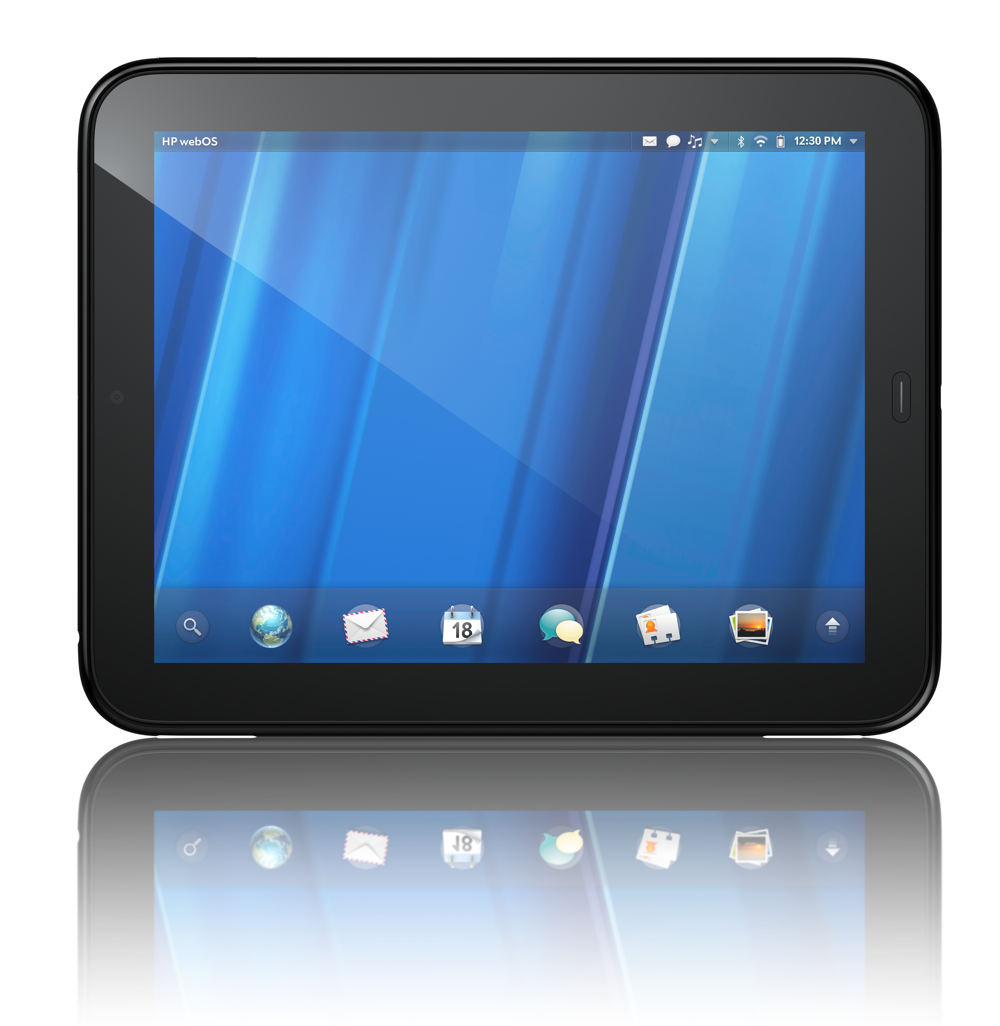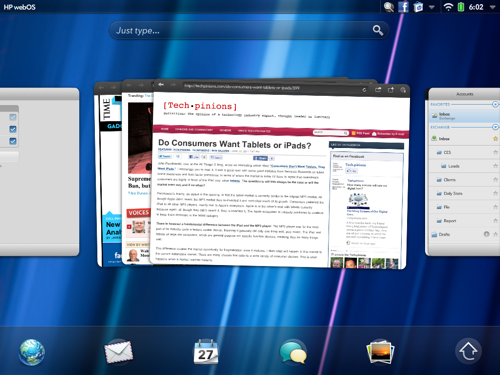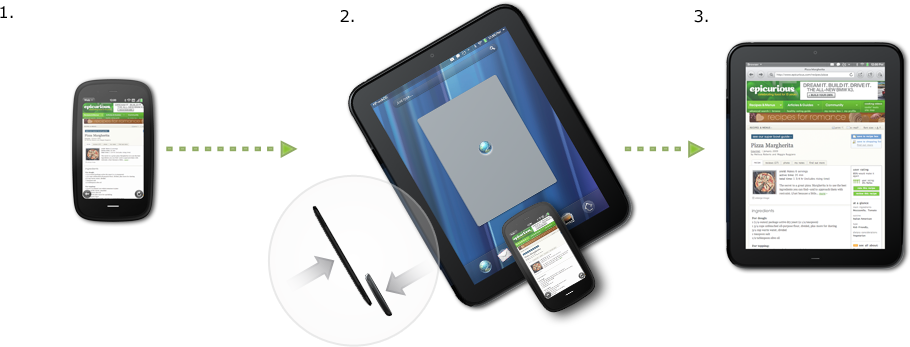I have been a WebOS fan since it was first released. Actually I have been a Palm fan in general since the first Palm Pilot. So to say that i’d love to see HP succeed with WebOS would be a mild understatement. The Palm Pre devices have evolved and although none have been a massive market success, the Palm team (now part of HP) has learned some key things; they have transferred that knowledge to the hottest part of the tech sector, which is tablets.
I will let the gadget reviewers tackle the speeds and feeds along with all the technical elements of the TouchPad with their reviews. I intend to focus this review more on my opinion of the touchpad, my experience with it, and the things that set it apart.
My overall Opinion
The TouchPad is an extremely good first tablet from HP. WebOS runs marvelously well on a larger screen. I’m not going to go so far as saying it runs even better than on a phone but lets just say that WebOS likes large screens.
The device itself is a bit bulky and heavier than my primary tablet, which is in iPad 2, but still very usable and very portable. The size and weight of the device is comparable to the Motorola XOOM.
Everything about WebOS was clean on the tablet. Gestures, the UI, the speed of the OS; all was fantastic. The only thing glaringly missing was a plethora of apps in the HP App Catalog. I am convinced that if HP had anywhere near the size of an App store catalog as Apple, the TouchPad would make a worthy competitor.
That however is being worked. We are assured from HP that they are in the for the long haul and are investing heavily into their developer programs.
I personally like this tablet quite a bit, more than any Android tablet i’ve used thus far. The software is largely the reason as I like the UI of WebOS and prefer it to Android – just my opinion mind you. The only thing holding the TouchPad back in competing with Android tablets in particular is the apps.
There are however three key things that set the TouchPad apart and are worth pointing out..
Multitasking
I firmly believe that at this point in time WebOS does the best job multi-tasking of any tablet i’ve used to date. WebOS accomplishes this with their “Card View” metaphor where you can see all the apps you have open as slightly smaller windows. With a quick finger swipe gesture “up” from the bottom of the TouchPad you quickly enter the card view.
You can also stack apps on top of each other to create space for multiple card view working environments. Ultimately this lets you have more apps open at one time, letting you jump back and forth between a larger selection of applications.
Multi-tasking is a key part of the tablet and touch computing experience because it allows you to quickly move in and out of apps to accomplish whatever it is you seek to accomplish. An example would be surfing the web, checking a quick e-mail then back to surfing the web again.
Dock aware Exhibition Mode
This is one of the areas I think has the most potential for WebOS. Because the TouchPad charges by simply sitting in the dock, with no need to plug in, HP has designed a way to make each dock location aware.
This means you could set up multiple TouchPad docks, one near your bed, one in the living room, and one in the kitchen. Then you can set your TouchPad to show a different exhibition mode depending on which dock the TouchPad is sitting on. So when my TouchPad is docked next to my bed it would display a clock and the when sitting in the dock in the living room it would display a photo slideshow.
What’s more is that HP has put into their software development tools the ability for developers to creatve new apps that take advantage of the location aware docks and exhibition mode. So we can expect new apps that take advantage of the location aware dock and exhibition mode to show up in the HP App catalog shortly. I am looking forward to a recipe mode for when the TouchPad is docked in the my kitchen.

Touch to Share
The last real differentiator I want to focus on is touch to share. This is a concept I think is quite interesting.
The basic idea is that if you are viewing something on one WebOS device, like the TouchPad, and you want to transfer what you were viewing to another WebOS device, like a Pre. All you do is touch one to the other and what was on the screen on one device shows up on the other.
The concept is simple but powerul. When you are managing or moving from device to devic,e frequently this solution becomes quite useful. At launch Touch to Share will support transfering a web page from one WebOS device to another.
In the future however you can imagine using this for music, movies, photos, documents and more.
Because your WebOS devices are paired together, you can also use the touch to share technology to recieve and answer phone calls and text messages directly on the TouchPad. This is accomplished by using the cell connection on your Pre or any other WebOS based device.
Summary
As you can see HP is not only deeply commited to developing great hardware like the Pre and the TouchPad, but also to further developing the WebOS ecosystem.
What I praise the most is HP’s vision to create experiences where your HP devices work better together, touch to share being a great example.
The TouchPad represents a premium experience as a tablet. A lack of apps are the only things currently holding the TouchPad back.
Time will tell how long it takes for HP to get a critical mass of quality applications in their catalog. There are at launch at least enough name brand apps to keep the early buying base satisfied. But Web OS is a solid mobile OS and HP is tailoring it to meet the need of a broad range of customers. I consider it a very comptetive product and one that has serious market potential.


